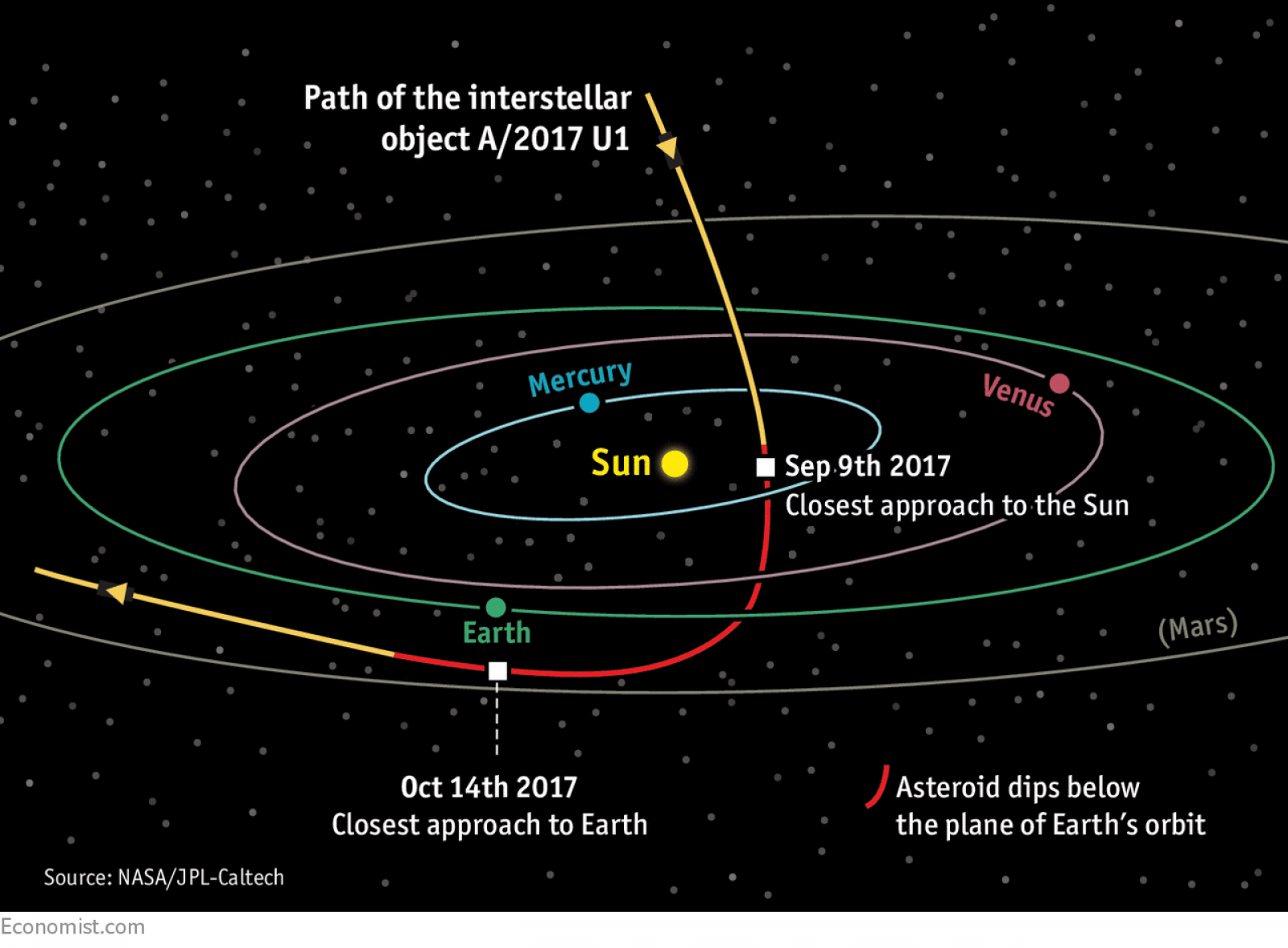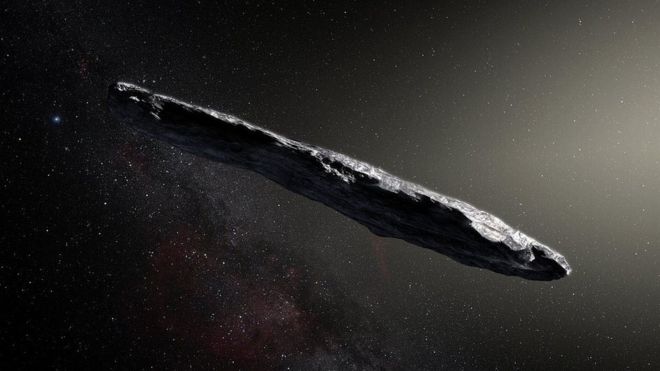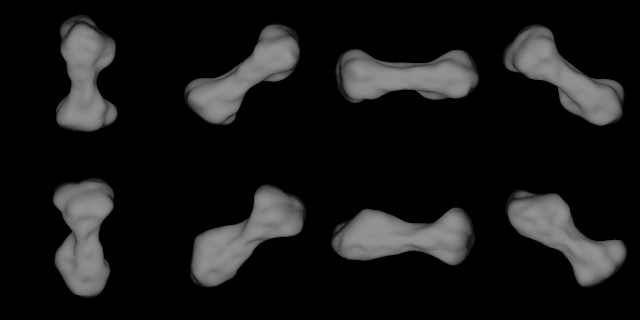- Joined
- Oct 29, 2002
- Messages
- 36,431
- Location
- East of Suez
I've just read about A/2017 U1. Click-Bait title aside, it's an interesting phenomenon.

Astronomers around the world are trying to track down a small, fast-moving object that is zipping through our solar system.
Is a comet? An asteroid? NASA's not sure. The space agency doesn't even know where it came from, but it's not behaving like the local space rocks and that means it may not be from our solar system.
If that's confirmed, NASA says "it would be the first interstellar object to be observed and confirmed by astronomers."
"We have been waiting for this day for decades," Paul Chodas, manager of NASA's Center for Near-Earth Object Studies, said in a NASA news release. "It's long been theorized that such objects exist -- asteroids or comets moving around between the stars and occasionally passing through our solar system -- but this is the first such detection. So far, everything indicates this is likely an interstellar object, but more data would help to confirm it.
NASA says astronomers are pointing telescopes on the ground and in space at the object to get that data.
For now, the object is being called A/2017 U1. Experts think it's less than a quarter-mile (400 meters) in diameter and it's racing through space at 15.8 miles (25.5 kilometers) per second.
Continued Here:
http://edition.cnn.com/2017/10/27/us/mystery-object-solar-system-trnd/index.html
This mystery object may be our first visitor from another solar system
By Amanda Barnett, CNN
Updated 1618 GMT (0018 HKT) October 29, 2017
Updated 1618 GMT (0018 HKT) October 29, 2017
Astronomers around the world are trying to track down a small, fast-moving object that is zipping through our solar system.
Is a comet? An asteroid? NASA's not sure. The space agency doesn't even know where it came from, but it's not behaving like the local space rocks and that means it may not be from our solar system.
If that's confirmed, NASA says "it would be the first interstellar object to be observed and confirmed by astronomers."
"We have been waiting for this day for decades," Paul Chodas, manager of NASA's Center for Near-Earth Object Studies, said in a NASA news release. "It's long been theorized that such objects exist -- asteroids or comets moving around between the stars and occasionally passing through our solar system -- but this is the first such detection. So far, everything indicates this is likely an interstellar object, but more data would help to confirm it.
NASA says astronomers are pointing telescopes on the ground and in space at the object to get that data.
For now, the object is being called A/2017 U1. Experts think it's less than a quarter-mile (400 meters) in diameter and it's racing through space at 15.8 miles (25.5 kilometers) per second.
Continued Here:
http://edition.cnn.com/2017/10/27/us/mystery-object-solar-system-trnd/index.html





